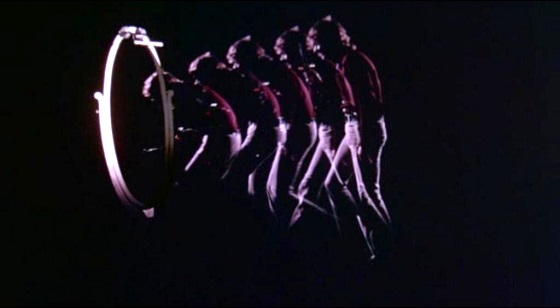When most people think about witches, they automatically envision women. Movies are no different; from the old classic The Witches to the modern masterpiece The Witch, the title characters are usually female. But there are male witches – or warlocks, as they are known – in movies, and 1971’s Simon, King of the Witches is as good of an example of a witch-man movie as one is bound to find.

Simon, King of the Witches is about a warlock, of course named Simon (Andrew Prine from The Town that Dreaded Sundown, Grizzly, and The Lords of Salem), who lives in a storm drain and is on a quest to become a god. The police don’t understand his ambitions and he is arrested for vagrancy. While in jail, he meets a young hustler named Turk (George Paulsin from Goldy: The Last of the Golden Bears) who takes him to a party where he is paid to tell fortunes and hand out magical trinkets. When the check for his services bounces, Simon puts a curse on his patron, and when the curse works, the partygoers are convinced that Simon is a real magician. Simon ends up with a small group of disciples, one of which is a young girl named Linda (Journey to Shiloh’s Brenda Scott) whose father happens to be a district attorney (The Towering Inferno’s Norman Burton). When the father finds out that his daughter is smitten with a warlock, he tries to frame him for a drug crime, but the powerful Simon has other ideas.

Director Bruce Kessler took time out from his busy television show schedule working on shows like “The Monkees,” “Adam-12,” and “Marcus Welby, M.D.” to make Simon, King of the Witches. Written by Robert Phippeny (writer of The Night of the Following Day and rumored to be an actual practicing warlock), the script combines elements of a supernatural occult movie with those of a hard-boiled crime drama, peppering in little snippets of cornball, almost slapstick-style humor here and there to keep it from getting too serious (here’s an actual exchange between Turk and Simon when Simon shows the kid his magic mirror – Turk: “Turn it on.” Simon: “First, I must charge the effluvial condenser.” Turk: “You’re weird.”). Simon, King of the Witches is more subliminally creepy than outright scary, but what it lacks in horror is more than made up for in surreal imagery and intense melodrama. In short; the movie is just strange.

Released just a couple of years after the infamous Tate-Labianca murders, Simon, King of the Witches suffered from an ill-advised initial advertising campaign that tried to tie the film to the Charles Manson family. The film was represented as being full of satanic rituals and human sacrifices, and even though there is a little bit of that kind of stuff in the movie, that’s not really what the bulk of it is about. Moviegoers who expected a devil-worshipping movie were disappointed, and the film suffered at the box office. It was only years later that Simon, King of the Witches found the cult following which it still enjoys to this day.

Simon, King of the Witches was shot by cinematographer David L. Butler (who was a camera operator on everything from Apocalypse Now to Jaws 2) in brilliant Metrocolor, a fact that justifies the purple scarves and yellow tank tops in the costuming. Butler makes liberal use of non-motivated light which allows him to bring the bright colors out of the selective shadowing of the sets. Butler also utilizes a handful of neat camera tricks when the movie gets really crazy, techniques that play with double exposures, spinning cameras, and speed manipulations. All in all, Butler’s cinematography helps to give Simon, King of the Witches a truly distinct look.

Butler’s eye-popping photography paves the way for some campy and corny special effects by Roger George, the man behind the visuals in tons of horror and sci-fi movies, from Invisible Invaders and The Amazing Transparent Man to Humanoids from the Deep and Night of the Creeps. Most of the trippy techno effects, including the mysterious red orb that periodically comes after Simon and his pals, are accomplished with a rotoscoping technique that is similar to that which is found in movies like The Dunwich Horror and The Astral Factor, two more flicks from George’s exhaustive resume. There are a handful of blood and guts effects, but most of the gore isn’t shown onscreen; Simon, King of the Witches uses the more high-tech, post-production effects to provide its surreal imagery, and it’s awesome in the silliest way possible.

The score for Simon, King of the Witches was composed by Stu Phillips, who would go on to become somewhat of a sci-fi legend by writing the themes to, among other things, both Battlestar Galactica and Buck Rogers in the 25th Century. Phillips’ soundtrack for Simon, King of the Witches is almost too stereotypical, with spooky orchestral pieces and suspenseful stingers, but the generic brand of neo-classical music is the perfect complement to the movie’s seizure-inducing visual imagery.

It goes without saying that Simon, King of the Witches is not a run-of-the-mill movie about witchcraft. It’s corny, campy, creepy, and more than a little strange, but fans of occult films could find a worse way to spend a couple of hours.